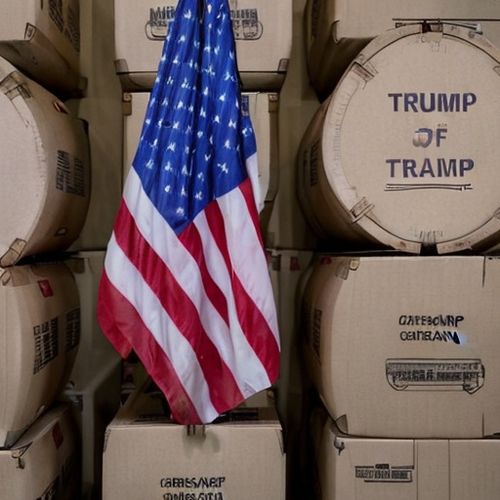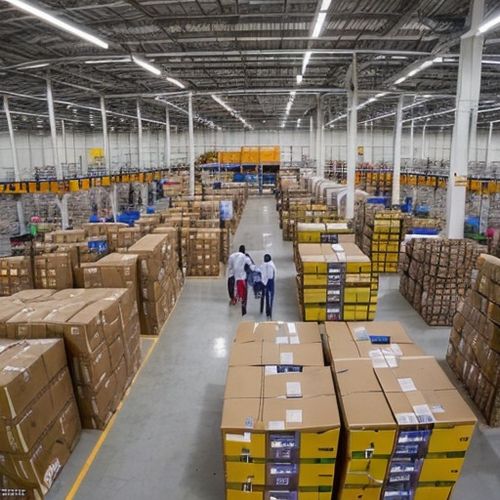President Trump’s recent tariff policies have sparked significant concern among small business owners across the United States. The tariffs, which include a 10% levy on all imports and reciprocal tariffs on imports from about 90 nations, are expected to have wide-ranging impacts on small businesses. Here are some of the key ways small businesses might be affected:
Small businesses that import goods or rely on imported materials will face immediate cost increases. This includes a wide range of industries, from those importing high-end products like French wine and German cars to those relying on basic inputs like steel and oil. These increased costs can strain cash flow and reduce profitability unless businesses can pass them on to consumers.
Tariffs can disrupt global supply chains, making it difficult for small businesses to obtain the goods and materials they need. This can lead to delays, stockouts, and unhappy customers. For example, a small retailer that sources products from China may find it challenging to maintain inventory levels due to higher tariffs and potential supply chain bottlenecks.
Small businesses that export goods overseas will face retaliatory tariffs imposed by U.S. trading partners. This can reduce demand for American-made products and shrink profit margins. Additionally, rising anti-American sentiment and potential boycotts of U.S. products could further hurt exporters.
Higher tariffs will likely lead to increased prices for consumers. Small businesses may need to raise prices to cover the additional costs, which could result in reduced demand. For example, a local restaurant that relies on imported ingredients may have to increase menu prices, potentially driving away price-sensitive customers.
The ongoing uncertainty surrounding tariff policies makes it difficult for small businesses to plan for the future. Frequent changes and reversals in tariff policies create a “wait and see” environment, which can stall investments and delay strategic decisions. This uncertainty can be particularly challenging for small businesses with limited resources and flexibility.
How Small Businesses Can Respond
Despite these challenges, there are several strategies small businesses can adopt to mitigate the impact of tariffs:
If you plan to increase prices due to higher import costs, it’s important to communicate this clearly to your customers. Explain the reasons behind the price increase and emphasize any quality or value you continue to provide. For example, a high-end restaurant could highlight its commitment to using premium ingredients despite the higher costs.
If you are a significant customer of a supplier, use your purchasing power to negotiate better pricing. You may be able to reach a deal that splits the cost increase related to tariffs.
Reevaluate your supply chain to identify potential cost savings. Look for alternative suppliers, both domestically and internationally, that can offer better pricing or are less affected by tariffs. This could also involve exploring suppliers in countries with lower or no tariffs.
Streamline your operations to absorb higher costs. This could involve eliminating low-margin products, renegotiating leases, or finding ways to reduce labor costs through automation or outsourcing. For example, a small manufacturer might consider automating certain processes to reduce labor expenses.
If you anticipate higher costs and potential cash flow challenges, consider securing additional capital. This could include applying for a working capital loan or a business line of credit to help bridge the gap. With potential interest rate cuts by the Federal Reserve, securing financing now could provide some financial relief.
Long-term Considerations
While the immediate impact of tariffs is significant, small businesses can also look to the long term. Building more resilient supply chains, focusing on domestic production, and investing in technology can help mitigate future risks. Additionally, policymakers may offer temporary tax breaks or incentives to support small businesses during this period.
In summary, Trump’s tariffs present both immediate challenges and long-term opportunities for small businesses. By adopting strategic responses and focusing on resilience, small businesses can navigate these turbulent times and emerge stronger.

By Sarah Davis/Apr 7, 2025

By Samuel Cooper/Apr 7, 2025

By Grace Cox/Apr 7, 2025

By Thomas Roberts/Apr 7, 2025

By Olivia Reed/Apr 7, 2025

By Daniel Scott/Apr 7, 2025

By Megan Clark/Apr 7, 2025

By Samuel Cooper/Apr 7, 2025

By William Miller/Apr 7, 2025

By John Smith/Apr 7, 2025

By Samuel Cooper/Apr 6, 2025

By Lily Simpson/Apr 6, 2025

By Daniel Scott/Apr 6, 2025

By Grace Cox/Apr 6, 2025

By Olivia Reed/Apr 6, 2025

By Emma Thompson/Apr 6, 2025

By Rebecca Stewart/Apr 6, 2025